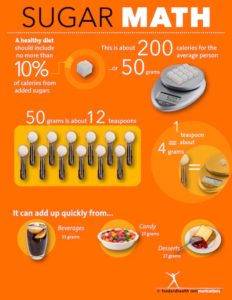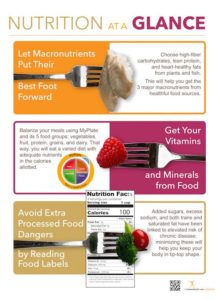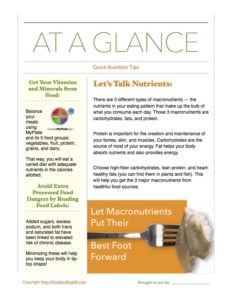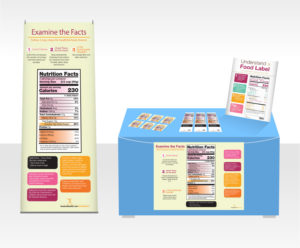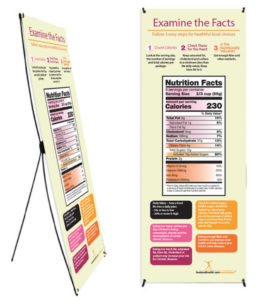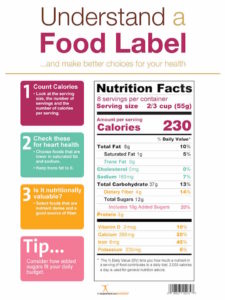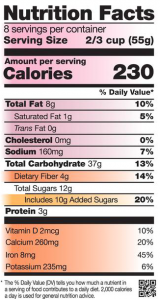
While there are multiple ways to purchase groceries, consumers still need time to make a list and then read and decipher food labels. With nearly 20,000 new products hitting the shelves annually, you almost need a PhD in nutrition to understand some of the information on those labels.
Today I want to talk about some new front-of-the-package symbols, which may make shopping life a little bit easier. These are non-government, third-party-authorized seals that quickly let people know if a product meets certain standards.
A few earlier labels of this type include Nuval and Facts up Front. Nuval started in 2008 and was a collaborative effort between Topco Associates, LLC, and Griffin Hospital of Derby, Connecticut. Griffin Hospital is a non-profit community hospital and houses the Yale-Griffin Prevention Research Center. Nutrition professionals and medical experts, including Dr. David Katz, assisted in the development of Nuval. Its system assigns a nutrition score to foods to make it easier for consumers to quickly choose healthful options. With Nuval, the higher the score, the higher the nutritional value of the food.
Facts Up Front is another system that was developed by the Grocery Manufacturers Association. It is a voluntary program that shows the calories, grams of saturated fat, sugar, and sodium in a serving of food on the front of its package. Labels also may display additional information, including fiber and calcium content. Facts Up Front are based on nutrition science and are taken right from the Nutrition Facts label.
Logos like the American Heart Association’s Heart Check Mark on packaged foods and the Certified Humane Seal on eggs, meat, and dairy are meant to help consumers navigate the grocery store with ease and to encourage companies to develop products that meet the desired standards. Standards for the AHA heart check mark include foods with less than 6.5 grams of fat, 1 gram of saturated fat, less than 0.5 grams of trans fat, 20 mg of cholesterol or less, and varying amounts of sodium allowed depending on the product.
Three new food label stamps that will help to improve the nutrition profile of food that makes it to the store and help shoppers make better choices are coming soon, so I’d like to take a closer look at each one so that you and your clients know what’s coming.
The first is the Good Housekeeping “Nutritionist Approved” emblem. Items that are granted this seal have been given the green light by Jacylyn London, the registered dietitian who developed the program. London, the nutrition director of the Good Housekeeping Institute, evaluates products that have applied for the seal to be sure they are aligned with the 2015-2020 US Dietary Guidelines for Americans. In addition, the product must comply with the companies’ core values of simplicity (makes is simpler for consumer to keep a healthful habit and/or has simple ingredients and fewer additives than their counterparts), transparency (contains accurate claims on products that are not misleading to consumers) and innovation (utilizes current technologies to make healthier habits simpler for consumers and/or boost sustainability).
To receive the stamp, a product does not need to be 100% healthful, but does need to be a wise choice in a particular category. You may see the seal on bagged salad or a low-fat frozen dinner as well as a mini dark chocolate candy. The program not only alerts consumers of healthier choices, it also incentivizes the company to produce and market improved products. Companies pay a licensing fee for the seal, which includes consulting fees. The Nutritionist Approved seal started in October 2016 with nine brands and is growing quickly. In the long-term, the hope is to expand it for use in airports, restaurants, and movie theaters.
Another stamp that will be hitting the shelves soon was developed by Carolyn Sluyter of Oldways. Sluyter is the manager of the Whole Grain Stamp Program. The new stamp is the 50% whole grain stamp, which was developed to complement two other stamps- the “100% Whole Grain” stamp and the general “Whole Grain” stamp. The former is self-explanatory, and the latter can be used on foods that are made with some whole grains, specifically 20 grams or more per serving. These new stamps make it easier for consumers to identify foods made with whole grains.
The third stamp, Certified Transitional, is a new stamp that may be used by farmers to reflect that they are in the process of becoming certified organic. Many farmers cannot afford the 3-year transition it requires to become certified organic. Developed by Kashi after they were unable to source organic almonds for their cereal, the program means to support farmers in the transition period, which would assist shoppers to directly affect US organic agriculture. Although Kashi is the only brand with this seal, it can be utilized by any company managed by Quality Assurance International, an independent third-party certifying agency. During the transitional period, farmers are paid a premium price for their organic products, in turn provides financial support. Nicole Nestojko, senior director of supply chain and sustainability at Kashi, believes that Certified Transitional is more than just a stamp, it is a movement to alter the food system.
By Lisa Andrews, MED, RD, LD
References:



